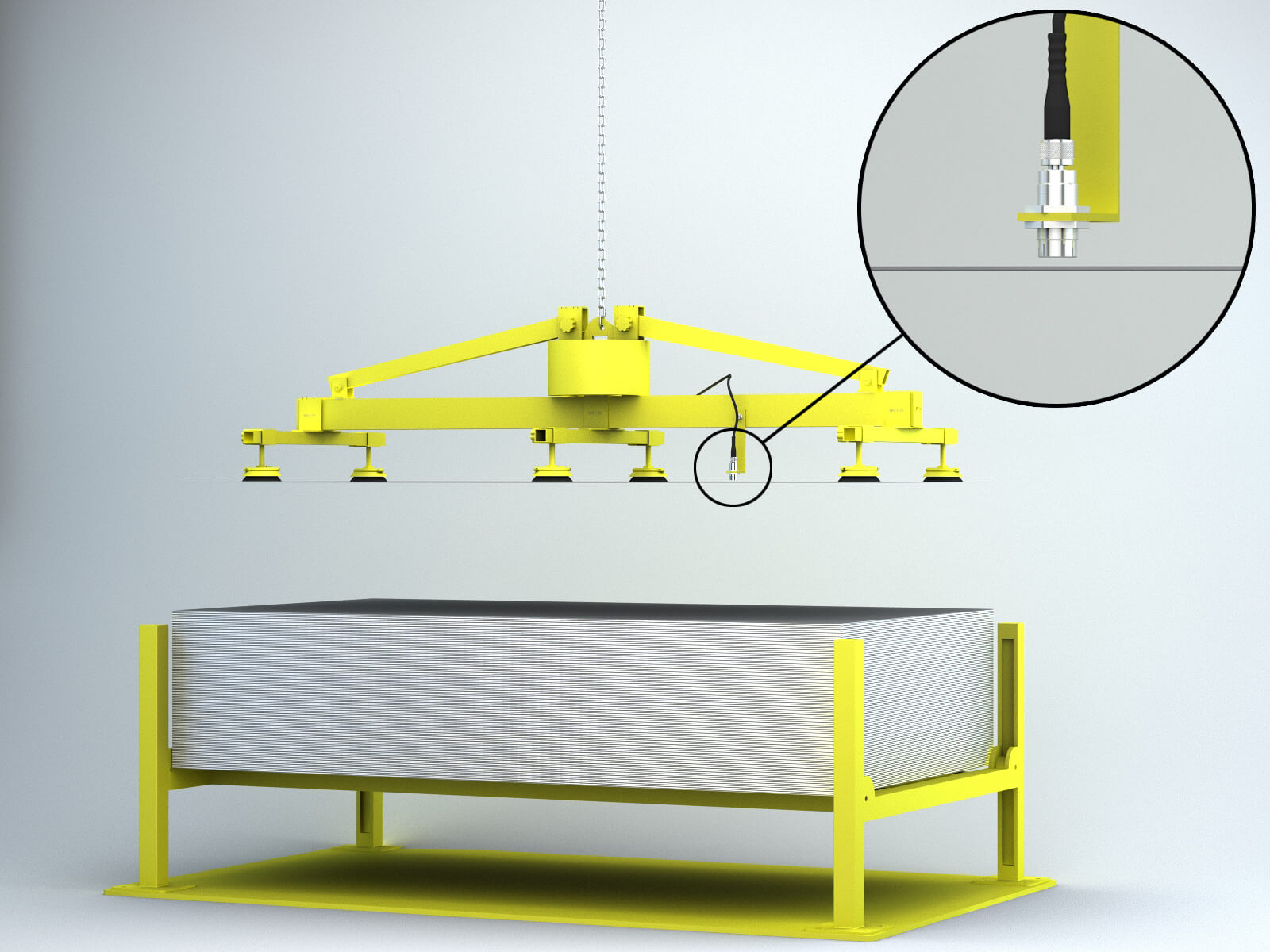Summary
A German producer of deep-drawn metal parts for the automotive industry uses double-sheet sensing to prevent costly tool damage and eliminate downtime. A one-piece stainless steel sensor checks sheet-metal material presented to the forming press. If it detects that two or more sheets have stuck together, the machine control system rejects the material and prevents the press from operating.
Customer Values
- Reliable double-sheet detection eliminates tool damage and downtime
- Compact, robust sensor ensures convenient, unobtrusive operation
- Increased flexibility as a single sensor detects several different materials
- Reduced complexity as sensor connects directly to customer’s control system
Specific Product Advantages
- Sensor specially developed for detecting multiple overlapping metal sheets
- Patented Condet® technology makes performance independent of target material
- Rugged inductive sensor with one-piece stainless steel construction
- Extended sensing distance eliminates risk of mechanical damage
Customer Application
Deep drawing and other metal-forming techniques are widely used in the automotive industry, and require expensive press tools to produce complex profiles from sheet metal blanks. During high-volume production, an automated feeder loads sheets of steel or aluminum to the press.
Metal sheets are lightly lubricated to reduce friction during deep drawing, but the thin film of oil can cause two sheets to stick together in the feeder. If the press operates with stuck-together sheets loaded, the forming tool will be damaged, resulting in downtime and repair costs. A sensing system must check the material before it is loaded.
A rugged, metal-bodied sensor is required at the loading station, checking each sheet as it is presented by the feeder. If it detects a double sheet, the material must be rejected and the operating cycle inhibited. The customer requires the sensor to be highly reliable with no special control equipment.
Customer Solution
ideal for this application and have been specially developed for detecting multiple overlapping metal sheets. Patented Condet® technology ensures that sensing capability is not dependent on the target material, allowing the device to sense carbon steel, stainless steel and aluminum.
One-piece stainless steel construction ensures that 700 series sensors are exceptionally robust. The chosen device is barely 65mm long with an M30-threaded body, offering highly reliable operation in a compact housing. A sensing distance of between 3mm and 5mm minimizes the possibility of mechanical damage arising from direct contact with the target.
Once the sensor is set up for the type of material and the sheet thickness to be sensed, operation is simple. The sensor only triggers when a double sheet is detected, and an industry-standard PNP normally-open configuration connects directly to the customer’s control system using a threaded metal cable connector.
Previously, the customer had trialed alternative sensor technologies. All were excessively cumbersome and difficult to set up, and most were unable to detect double sheets reliably. Contrinex 700 series sensors are compact, robust and highly reliable with an attractive total cost of ownership, completely satisfying customer expectations.
